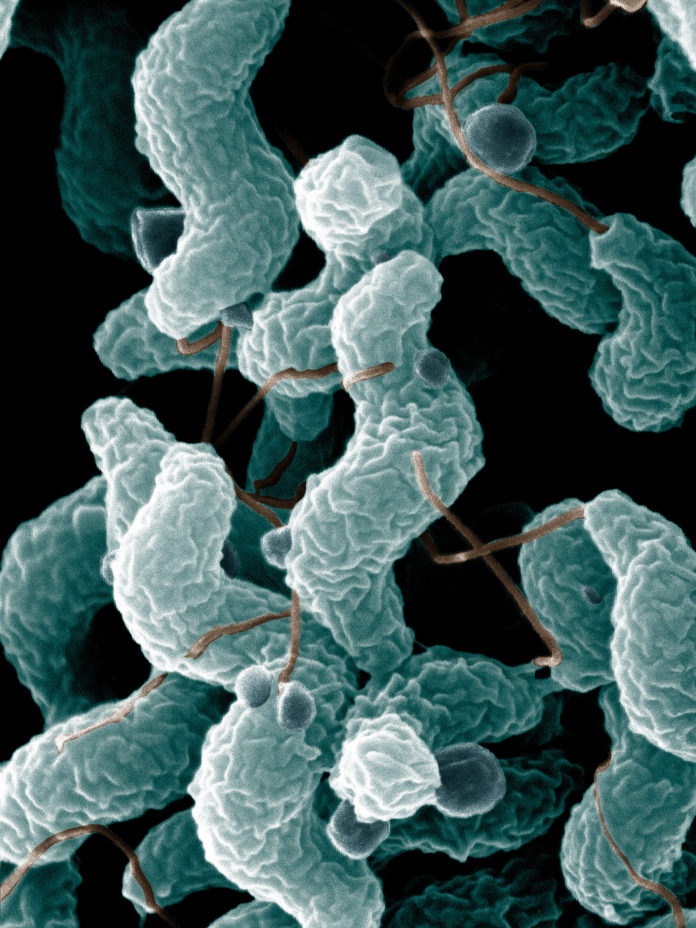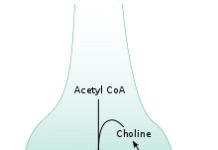Campylobacter is a bacteria that causes intestinal infections that can lead to serious complications, including the paralyzing disease Guillain-Barre syndrome.
Campylobacter is a group of bacteria that causes a foodborne intestinal infection called campylobacteriosis, or Campylobacter enteritis.
Individual cases of campylobacteriosis are usually associated with eating raw or undercooked poultry, or result from cross-contamination with these foods, such as by eating vegetables that were chopped on the same (unwashed) cutting board as Campylobacter-contaminated meat.
Campylobacter outbreaks, on the other hand, usually stem from unpasteurized dairy products, contaminated water, poultry, and produce, according to the Centers for Disease Control and Prevention (CDC).
Each year in the United States, Campylobacter causes an estimated 1.3 million infections, 13,000 hospitalizations, and 120 deaths, according to the CDC.
Campylobacter can also infect dogs and other pets that swim in polluted bodies of water.
The species Campylobacter jejuni causes the most cases of campylobacteriosis, according to the National Institute of Allergy and Infectious Diseases (NIAID). Other species, including C. fetus and C. coli, also frequently cause disease.
Campylobacter Symptoms
Some people infected with Campylobacter don't experience any symptoms. Those who experience symptoms are usually sick for two to five days, and sometimes up to 10 days, according to NIAID.
Symptoms include:
- Diarrhea, often bloody
- Nausea and vomiting
- Abdominal cramps and pain
- Fever
- Fatigue
For people with weakened immune systems, Campylobacter may spread to the bloodstream and cause a life-threatening infection.
In rare cases, campylobacteriosis may cause complications such as convulsions, meningitis (inflammation of the membranes around the brain and spinal cord), arthritis, and Guillain-Barre syndrome (GBS).
GBS, a disease that attacks the body's nerves, is the leading cause of acute paralysis in the United States, according to NIAID.
It usually develops two to four weeks after campylobacteriosis clears, causing paralysis of the limbs that lasts for several weeks.
An estimated 1 in 1,000 reported Campylobacter illnesses in the United States leads to GBS, and up to 40 percent of GBS cases in the country may follow campylobacteriosis, according to the CDC.
Campylobacter Treatment
Most cases of campylobacteriosis resolve without any additional treatment beyond proper hydration, which is essential for avoiding dehydration from diarrhea and vomiting.
To help with diarrhea, it's recommended to drink 8 to 10 glasses of fluids — especially water — every day, and at least one cup of fluid after each loose bowel movement.
Eating numerous small meals throughout the day instead of three large meals may also help, particularly if they include salty and high-potassium foods.
Antibiotic treatment of Campylobacter infection is necessary only in severe cases and in people at high risk for a severe illness, such as those with a weakened immune system from illness or medications.
The antibiotics azithromycin, and those in the fluoroquinolone class, such as ciprofloxacin, are the standard treatment for Campylobacter infections.
Campylobacter 'Superbugs'
The CDC is detecting an increase in Campylobacter "superbugs" that are resistant to azithromycin or ciprofloxacin, rendering the drugs useless against those infections.
About 23 percent of Campylobacter illnesses tested are resistant to ciprofloxacin, and 2 percent are resistant to azithromycin, according to the agency.
Treating these severe infections requires first testing the bacteria to see which drugs are effective against them.


Editorial Sources and Fact-Checking
- Antibiotic Resistance Threats in the United States, 2013; CDC.
- Campylobacter; CDC.
- Campylobacteriosis; National Institute of Allergy and Infectious Diseases.











































